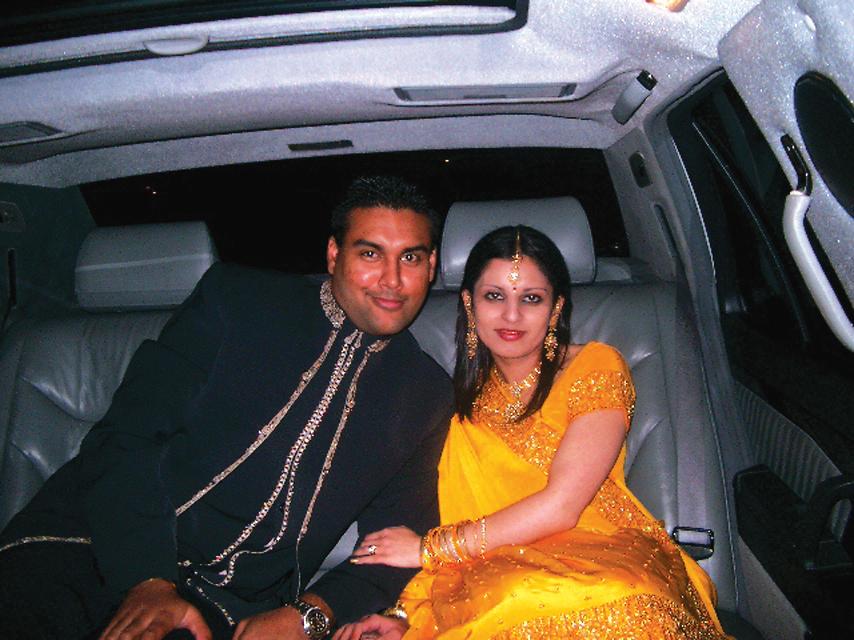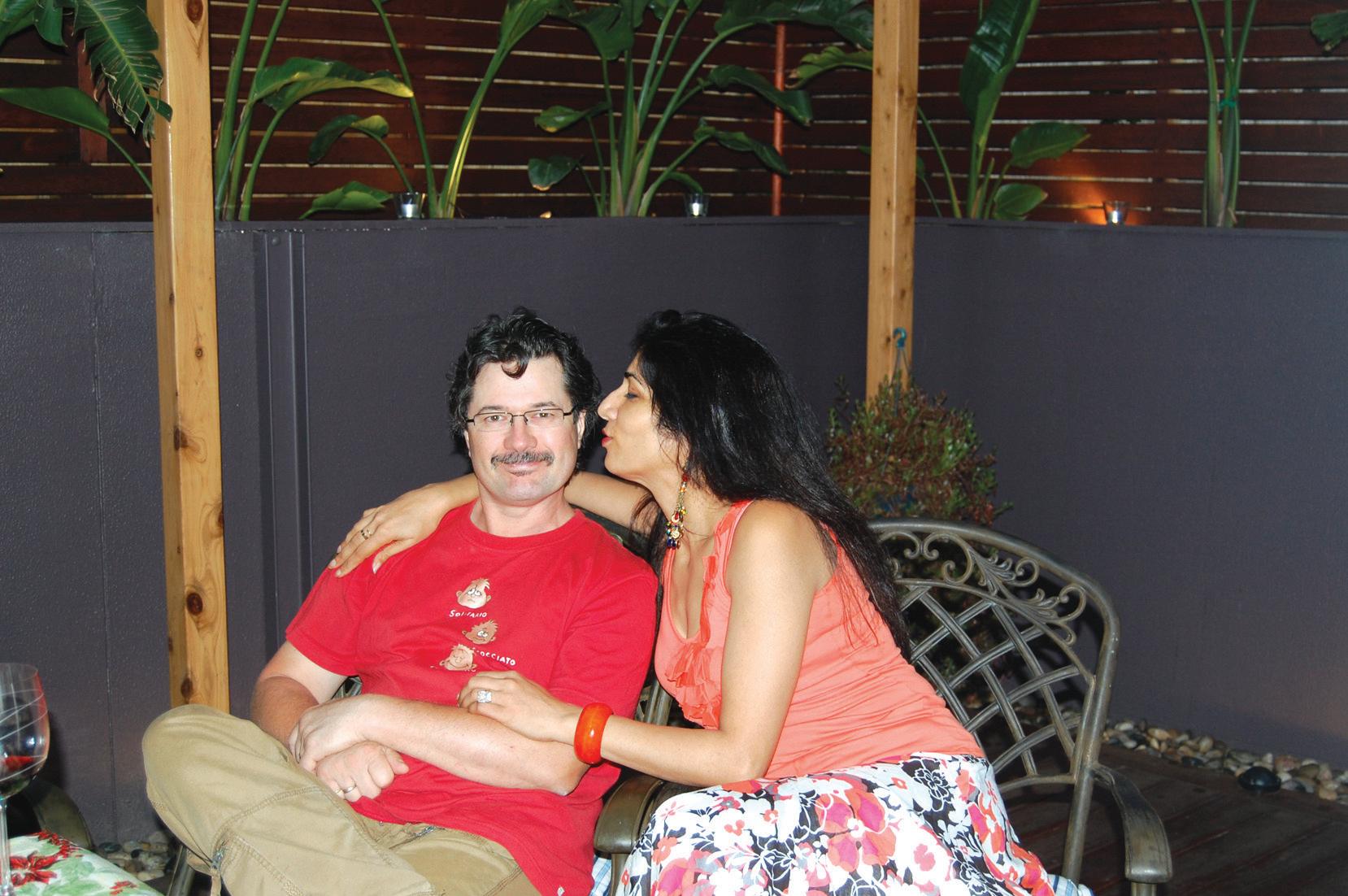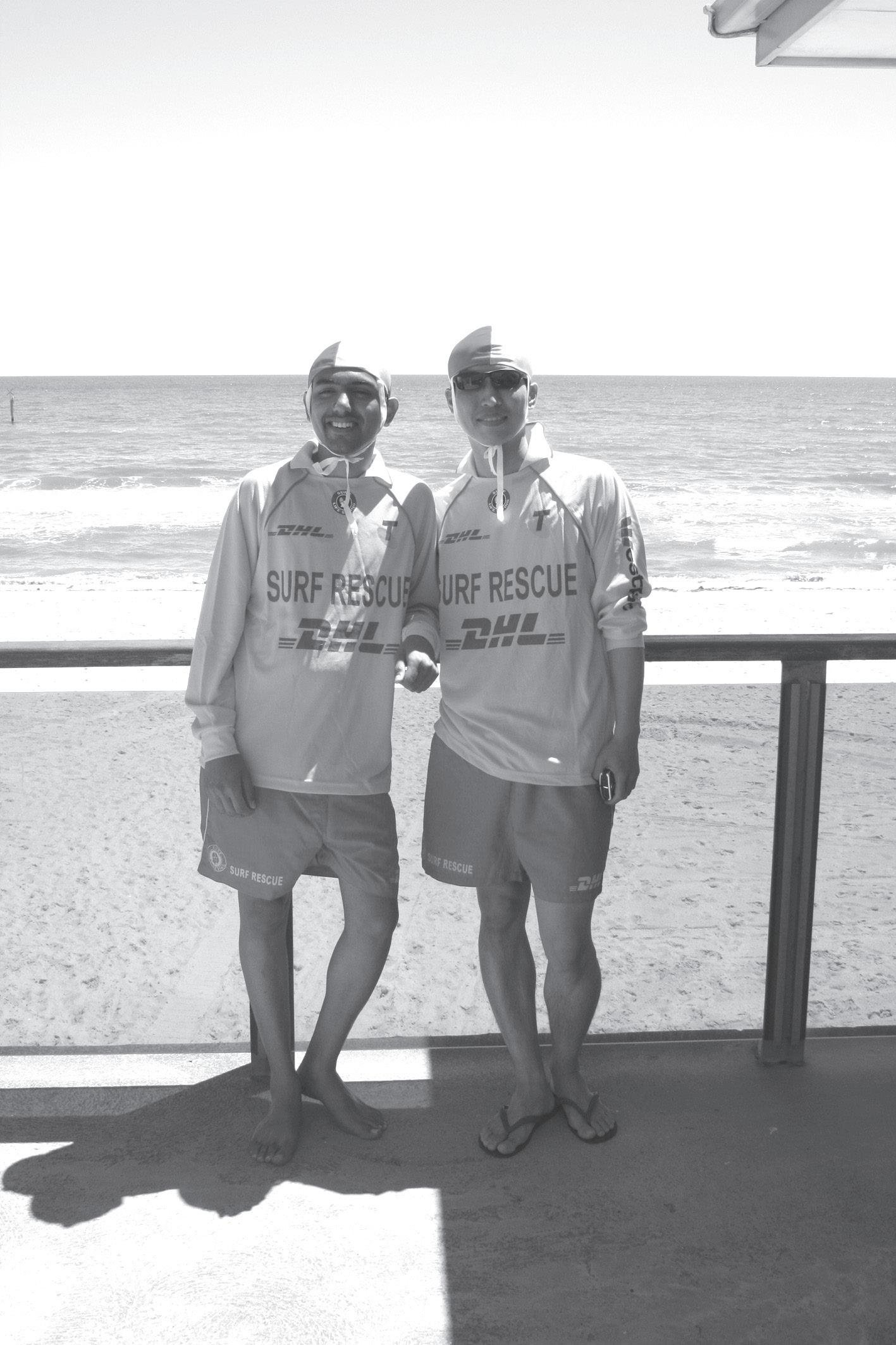
24 minute read
Beach boy
from 2010-02 Sydney (1)
by Indian Link
VISHAL KUKAL talks about making friends and influencing people as a volunteer lifesaver on Victoria’s beaches
How it all began…
A few months ago, I visited a stall run by Life Saving Victoria, who were looking for volunteers to join their team of lifesavers patrolling the beaches of the state. Their dedication and devotion impressed me, and I asked if I could join the team, although I didn’t even know how to swim well. They accepted my request, and after three weeks of swimming classes and five days of intensive coaching in the duties of a lifesaver, I was ready to take on the beach.
How to be a lifesaver…
There are a lot of things I learned. Apart from the obvious ones like patrolling, offering first aid and educating people about water safety, I also learned about rescue operations, rules and regulations, sea levels, even how to recognise safe and unsafe areas to swim. For example, if there has been a shark sighting, we follow certain evacuation procedures. If a person has been stung by a jellyfish, we need to put ice on the affected area to reduce the sting which can be very painful. The entire course was very interesting and informative, and I am glad that I took the initiative to be a lifesaver.
Currently my job involves….
Patrolling mainly, first aid when needed, and talking to people about water safety. I am a part of the Chelsea Long Beach Life Saving Club and I have now learned all about the beach, its safe and dangerous spots, and how to steer tourists and visitors to stay within the flags which mark safe spots. I constantly scan the beach through binoculars for signs of any distress or unusual incidents and we then take action. Very often students tend to be a little adventurous and it is my job to make sure they are cautious, to avoid accidents. Of course, I am still new at the job and have not had any major crisis or life-saving opportunities, but I am sure a few will come my way.
I enjoy being a volunteer lifesaver because…
Apart from being able to offer voluntary backgrounds, cultures and countries, of different ages and attitudes – it has helped a lot in understanding and appreciating people. The beach I patrol is a popular tourist destination as well, so we get a mix of all kinds of people. But because it is rare to see Indian lifesavers, a lot of sub-continent visitors come over for a chat and are curious about what I do. So in addition to educating them about water safety, I also get a chance to talk to and meet different kinds of people. Some are regular visitors on the beach, so they recognise me and come over to say hello. It’s a good feeling and I enjoy being a part of the team.
How the job helps me
It keeps me fit and active, and of course, I am happy to contribute to society. I am a student presently, studying accounting and finance, so I don’t have much time on hand. But whatever little time I can spare, specially on Sundays, I go down to the beach to take on my lifesaver duties. I have also found that being a lifesaver is a great way to get to know the Aussies and their lifestyle and culture. They are all friendly and helpful, and I have learned a lot through interaction with them.
About myself…
I am originally from New Delhi, where I studied and worked as an accountant. I have a history of social work, and was also actively involved in a Delhi University project on a smoke-free initiative. My job then was to talk to students and adults on the merits of being smoke-free, and this too was voluntary service. I enjoy helping others and making a positive contribution to society. I am also a member of the Rootvij Kakadia Foundation which aims to educate people about water safety.
My message…
I enjoy being a lifesaver, and with the right kind of training and a positive attitude, anyone can volunteer. But for me it’s not just that, because I try and spread the message that being a lifesaver is a responsible, yet fun job. In fact, I have convinced some of my friends to join the service too, and they are keen on starting the training. Connecting with people is important, and my voluntary job as a lifesaver has helped me make friends as well as help society.
Vishal spoke with Sheryl Dixit
Life-saving foundation in memory of drown victim
Rising temperatures + summer heat = time to head for the beach.
While it is great fun to be in the sun, it is essential to add beach safety to this equation. Australia is blessed with one of the most beautiful coastlines and pristine beaches. Beach culture is prevalent in Australia especially around this time of the year.
Unfortunately however many new migrants are not au fait with water and swimming education that is crucial to their safety. This has resulted in a disproportionate number of drowning and water-related injuries among the migrant communities in Australia. It has been noted statistically that the majority of harmful incidents and fatalities that occur at Australian beaches involve recentlyarrived Australians and other nationalities. These could be tourists, migrants or international students.
‘Read the Beach’ is an exciting new campaign being promoted by Melbourne’s Rootvij Kakadia Foundation (RKF) to raise beach safety awareness amongst the migrant community in Australia.
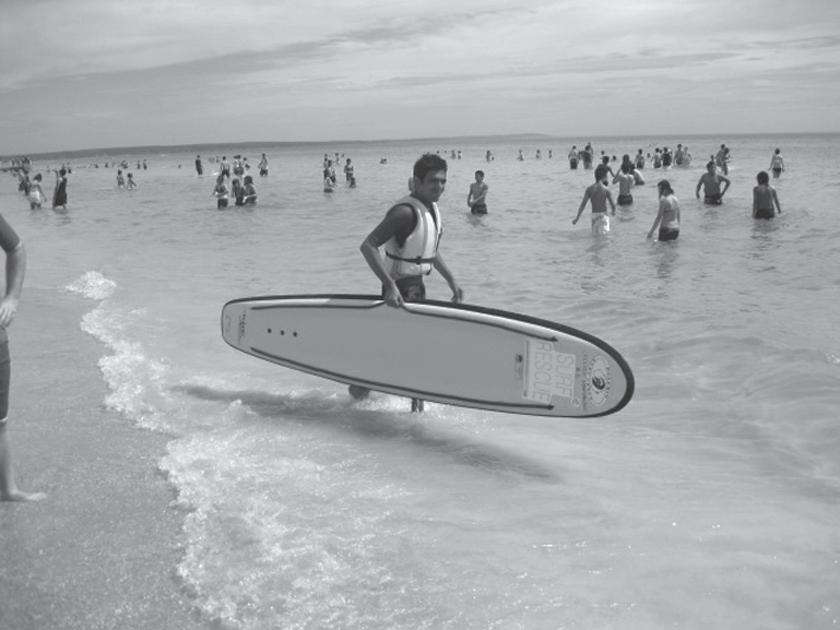
The foundation was formed last year in memory of young Rootvij Kakadia who drowned in Lake Tyers beach near Lakes Entrance in Victoria while attempting to save a friend. 26-year-old Rootvij was a popular young man who made the ultimate sacrifice while trying to help someone in need. Inspired by his selfless act, his family and friends decided to establish a forum to help educate people about various aspects of water safety.
A beach program was organised by RKF, recently, at Chelsea beach in Melbourne. It was attended by international students from Box Hill TAFE. The session was held in association with Life Saving Victoria (LSV). RKF funded 50% of the cost of conducting the session. This was the first time such a large multicultural group participated in a Beach Program conducted by LSV.
LSV is an organisation that has been imparting water safety education through its various courses and initiatives. Its mission is to prevent aquatic-related death and injury in all Victorian communities.
LSV’s vision is that all Victorians will learn water safety, swimming and resuscitation, and be provided with safe aquatic environments and venues. Rootvij’s brother Mounil Kadakia, who was instrumental in setting up the Foundation, said, “We think that the time is right for the Indian community to know about our Foundation. We are a small group, but we have very high aims and we definitely need a lot of support from the community”.
The RKF Foundation has more than 50 members mainly from the Indian community. Some of the key members of RKF include Kalpana, Manoj, Mounil and Radha Kadakia along with Dr Chandra Bhuta, Ravi Lakhani, Upendra Shah and Tejas Patel.




INVESTIGATORS in Pune’s terror attack are increasingly veering to the view that the Indian Mujahideen (IM) was behind the bombing because the city - an IT and educational hub popular also with foreigners - was once used by the group as its “important base and recruiting ground”, said an official privy to the probe.
Sleuths of Maharashtra’s Anti-Terrorist Squad (ATS) scouring for clues into the deadly blast that killed nine people are also closely monitoring CCTV footage from near the site that shows images of two potential suspects entering the German Bakery where the bombing took place.
The arrested members of the IM, a homegrown Islamist terror outfit with suspected links to the Pakistan-based Lashkar-e-Taiba (LeT), are being interrogated again in connection with the Pune blast. They include a recently arrested operative Shahzad Ahmed, alias Pappu, whose arrest Feb 2 in Azamgarh in Uttar Pradesh had caused a major dent in the organisationbelieved to be an offshoot of the banned Students’ Islamic Movement of India (SIMI). Security agencies say local IM members have been trained in arms and explosive handling in Pakistan and Bangladesh.
Ahmed was believed to have been trained as a pilot for a possible 9/11-type attack.
“From the preliminary examination, it (the blast) appears to be the handiwork of the IM,” said the official said, on condition of anonymity.
“The IM had used Pune as one of its important bases and the city was on its radar for sometime,” the official said. The group first came into the limelight after it owned up to the wave of bombings in Jaipur, Bangalore, Ahmedabad and New Delhi in 2007 and 2008.
Iqbal and Riyaz Bhatkal, the two brothers presently hiding in Karachi in a LeT camp and considered top leaders of the outfit, were in Pune for sometime in 2006 when they set up a terror module in the city that has a large number of Indian and foreign students studying such diverse subjects as management, media, engineering, films, software development, etc.
With the Bhatkal brothers in Karachi are two other IM leaders, Mufti Sufiyan and Rasool Parti, according to intelligence sources.
Iqbal, a hardcore Islamist, was part of the Tableeghi Jamaat - an organisation of “puritanic Muslims” - and used to preach in the Pune Jamia Masjid and other mosques in the city.
“Under the garb of the Tableeghi Jamaat the Bhatkals did talent hunting for the Indian Mujahideen in the city,” the official said.
The brothers met Mansoor Peerbhoy, a software professional, in Pune in 2007 through a common friend Asif Bashir Sheikh, another IM operative. Peerbhoy, accused in the 2008 blasts in various Indian cities and in police custody, was recruited in the IM soon and tasked to look after its IT cell.
According to sources, Peerbhoy, who has revealed his rendezvous with the Bhatkals in his interrogation, and his colleague Sheikh are being questioned afresh for clues into the February 13 bombing.
The two used to stay in a rented accommodation in Kondava in Pune before shifting to Mangalore in August 2008.
Besides, Sheikh and Peerbhoy other members of the IM’s Pune base were Mubeen Qadir Sheikh, Akbar Chaudhary,
Aniq Syed, Abdus Subhan Qureshi and Mohsin Chaudhary. Except for Chaudhary and Qureshi all its Pune members have been arrested.
Intelligence agencies believe that Qureshi and Chaudhary could have been behind the German Bakery bombing. They have have launched a massive manhunt to arrest the two who “have not fled the country”, said the sources.
Intelligence agencies that collected evidence from the blast said the materials used, RDX and ammonium nitrate, in the blast and the pattern of the bombing point towards the IM’s modus operandi.
Scotland Yard to help India in Commonwealth Games security
INDIA AND BRITAIN have agreed to cooperate on security for forthcoming sporting events like the hockey World Cup and Commonwealth Games (CWG) in Delhi this year.
“The UK and India have agreed to cooperate on security for major sporting events as Delhi will host the Commonwealth Games this year and London will host the Olympics and Paralympics in 2012,” said John Yates, assistant commissioner of the Metropolitan Police, also known as Scotland Yard.
Yates visited the national capital Feb 11-12 and met officials of the Indian government, Delhi Police, the Commonwealth Games Organising Committee and the Commonwealth Games Federation (CGF) to discuss security plans for the forthcoming hockey World Cup and the 2010 CWG.
“My visit is one of a series of interactions with the Indian authorities to discuss best practices in this area. I had a positive set of meetings, including a tour of the impressive Major Dhyan Chand National Stadium and a detailed security briefing for the hockey World Cup. The security plans for the hockey World Cup look robust and the UK looks forward to working with the Indian authorities as they are implemented,” Yates said in an official statement.
“We also had further positive discussions about security planning for the Commonwealth Games. The UK looks forward to continuing to work closely with the Indian authorities in the run up to this year’s sporting events in Delhi and beyond in preparation for the London Olympics,” he added.
Over three-fold hike in Indians studying in New Zealand
THERE HAS BEEN an over three-fold increase in Indians getting student visas to study in New Zealand in the past five years, authorities said recently.
As many as 9,591 Indians were issued students visas for the financial year 2008-09 as compared to 2,972 for the year 2004-05, said Immigration New Zealand. From July 1, 2009 to Jan 31, 2010, a total of 5,544 Indian student visa applications have been approved.

India stood second, after China, among 194 countries on the New Zealand immigration list.
Despite China holding the first position, the number of Chinese student coming to New Zealand has decreased from 52,059 to 26,518 in the past four years.
Parul, an Indian student, said the country has one of the best education systems, Continued on page 34
Continued from page 33 shortest visa processing time and student support services.
Richard Howard, an immigration adviser, said: “In view of the recent spate of attacks on the current batch in Australia and UK’s sudden decision to temporarily stop accepting student visa applications at its three centres in north India, the number is expected to increase more this year.”
India to spend US$ 200 bn on defence systems by 2022
INDIA IS SET to spend a whopping US$ 200 billion on defence acquisitions over the next 12 years to replace its outdated Sovietvintage inventory.
According to a study by the India Strategic Defence magazine, nearly half of this funding, or US$ 100 billion, will go to the Indian Air Force (IAF) which would need to replace more than half of its combat jet fleet as well as the entire transport aircraft and helicopter fleet.
The army needs new guns, tanks, rocket launchers, multi-terrain vehicles while the navy needs ships, aircraft carriers, an entire new range of submarines including nuclear-propelled and nuclear-armed.
The army has the largest requirement of helicopters while the navy needs both combat jets, helicopters, and a fleet of nearly 100 carrier-borne combat jets.
The details of the study will be published in March but according to a brief report in India Strategic’s DefExpo show daily being published Monday, it is not that India has military ambitions but just that more than 70 percent of the inventory of the Indian Armed Forces is 20-plus years old, and needs to be replaced as well as augmented with the sophistication of modern technology.
There have been few defence deals after the allegations over the acquisition of Bofors in the 1980s, and Russia, which inherited the Soviet military infrastructure, is unable to meet all the requirements.
According to official Russian reports, only 10 percent of the Russian weapons could be described as modern.
All the three services as well as the Coast Guard and paramilitary organisations also need satellites and net centricity.
Plans to acquire surveillance aircraft, lesser in capability though the IAF’s Phalcon AWACs and the navy’s P8-I Multimission Maritime Aircraft (MMA) are also being worked out.
Pilotless intelligence aircraft (drones) generally called UAVs, including those armed, are also on the top of the list of the three arms of the forces.
The report says that the Pakistani 26/11 terror attack on Mumbai, in which scores were brutally killed and wounded, has resulted in a wake up call to India and that the authorities had realized that 24-hour, 360-degree eyes and ears and preparedness to meet any attack were a necessity.
That also meant increased diplomatic and security cooperation with other countries.
It may be noted that the only major aircraft to be acquired by the IAF is the Su30 MKI, some 280 of which have already been ordered in successive follow-on deals that do not involve fresh tendering and are easy to go through procedurally.
IAF has a plan to build 45 combat squadrons (about 900 aircraft), up from its maximum effective strength of 39.5 squadrons a few years ago. Many of its aircraft have been phased out due to simple ageing.
Obama picks Indian American as special envoy to world Muslim group
PRESIDENT BARACK OBAMA has appointed Rashad Hussein, an IndianAmerican Muslim as a special envoy to the Organization of the Islamic Conference, the 57-nation organization that calls itself the “collective voice of the Muslim world.”
Announcing the new envoy, Obama described Hussein, who has been a deputy associate White House counsel, as “an accomplished lawyer and a close and trusted member of my White House staff.” Obama made the announcement in a video message to the US-Islamic World Forum in Doha, Qatar. He said he made the move to broaden the outreach strategy toward the Muslim world he laid out last year in Cairo.
“Rashad has played a key role in developing the partnerships I called for in Cairo. And as a hafiz of the Quran, he is a respected member of the American Muslim community, and I thank him for carrying forward this important work,” Obama said.
Hussain has served as a trial attorney at the US Department of Justice, a law clerk on the US Court of Appeals for the Sixth Circuit, and an editor of the Yale Law Journal. He posted a message on the White House blog saying he is “honoured and humbled” by the appointment.
“I am committed to deepening the partnerships that he (Obama) outlined in his visionary address last summer. I look forward to updating you on the Administration’s efforts in these areas over the coming months,” he said.
Secretary of State Hillary Clinton recently spoke at the 7th annual forum and Obama took the opportunity on February 13 to laud the event and reiterate what he calls the “new beginning between the United States and Muslims around the world” - a relationship that he says has been marred by “misunderstanding and mistrust.”
Obama said his administration has held thousands of events with students, civil society groups, faith leaders and entrepreneurs, including Clinton’s
“landmark” visit to Pakistan.
“And I look forward to continuing the dialogue during my visit to Indonesia next month. This dialogue has helped us turn many of the initiatives I outlined in Cairo into action,” the president said.
“None of this will be easy. Fully realising the new beginning we envision will take a long-term commitment. But we have
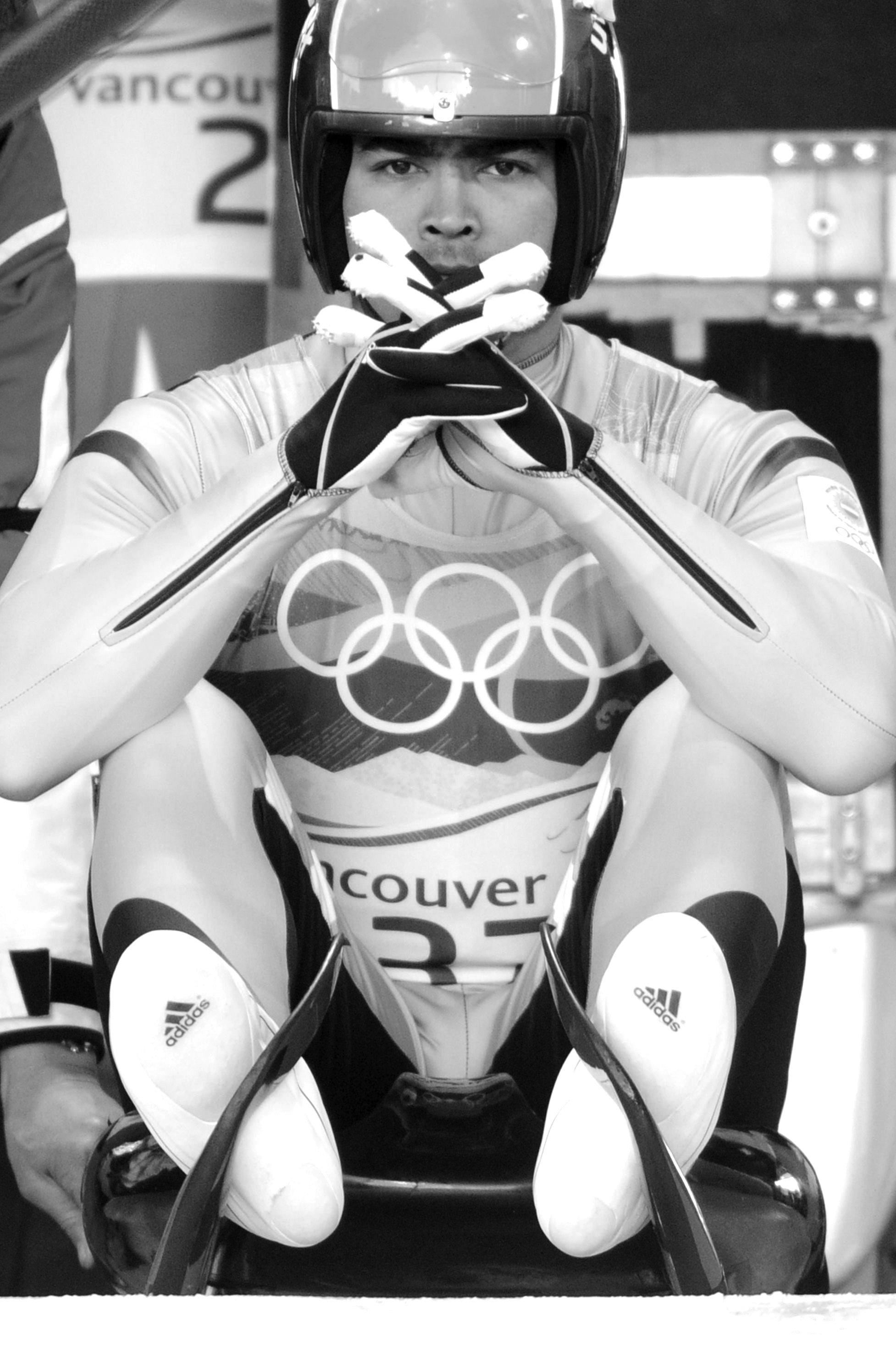
An
Indian now owns East India Company
WITH JUST AROUND a month to go for the re-launch of the East India Companythe world’s first multinational whose forces once ruled much of the globe - its new Indian owner says he is overwhelmed by “a huge feeling of redemption”.
It’s been a long, emotional and personal journey for Sanjiv Mehta, a Mumbai-born entrepreneur who completed the process of buying the East India Company (EIC) in 2005 from the “30 or 40” people who owned it.
Acutely aware that he had bought a piece of history - at its height the company generated half of world trade and employed a third of the British workforce - Mehta, now the sole owner, dived into the company’s rich and ruthless past in order to give it a new direction for the future.
With a $15-million investment and inputs from a range of experts - from designers and brand researchers to historians - Mehta is today poised to open the first East India Company store in London’s upmarket Mayfair neighbourhood in March.
And then there is the inevitable - and daunting - task of launching in India, a country whose resources, army, trade and politics the company had controlled for some 200 years.
It’s a task that Mehta has not taken lightly, he said in an interview. “Put yourself in my shoes for a moment: On a rational plane, when I bought the company I saw gold at the end of the rainbow.
“But, at an emotional level as an Indian, when you think with your heart as I do, I had this huge feeling of redemption - this indescribable feeling of owning a company that once owned us.”
The formal start of the East India Company is usually dated back to 1600 when Britain’s Queen Elizabeth I granted a group of merchants a charter under the name ‘The Company of Merchants of London Trading into the East Indies.’
With its own Elizabethan coat of armsnow owned by Mehta - the company was made responsible for bringing tea, coffee and luxury goods to the West and trading in spices across the globe.
By 1757 the company had become a powerful arm of British imperial might, with its own army, navy, shipping fleets and currency, and control over key trading posts in India - where it was known variously as Company Bahadur and John Company. In 1874, the British government nationalised the company, opportunistically blaming the 1857 uprising on its excesses. But the East India Company army, brought under the command of the Crown, retained its allpowerful presence in India.
“When I took over the company, my objective was to understand its history. I took a sabbatical from all other business and this became the single purpose in my life,” said Mehta.
He travelled around the world, visiting former EIC trading posts and museums, reading up records and meeting people “who understood the business of that time”.
“There was a huge sense of responsibility - I didn’t create this brand, but I wanted
Continued on page 36




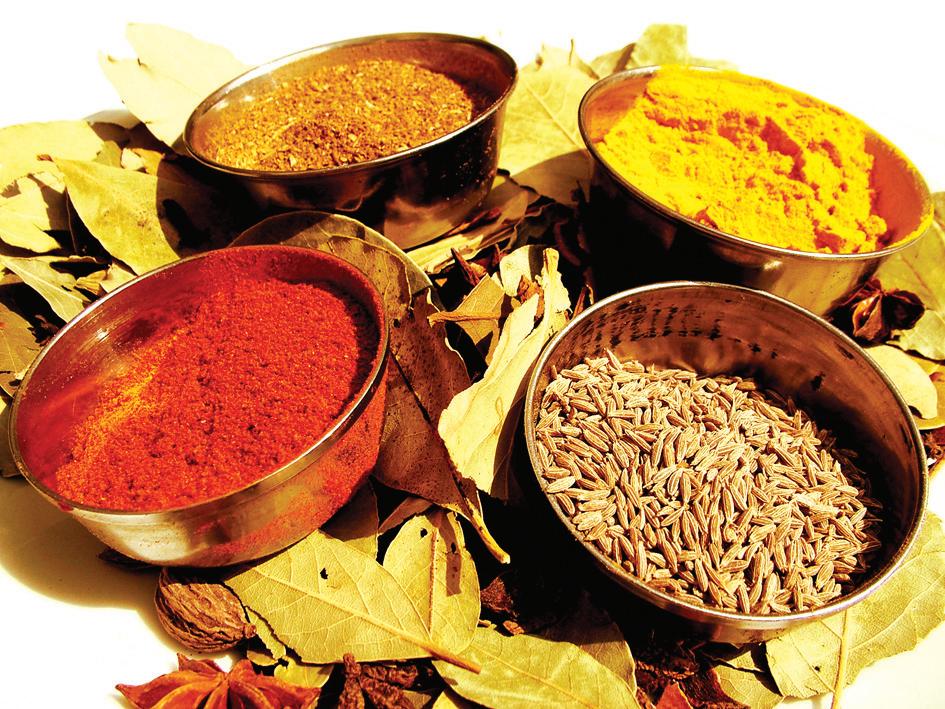

Continued from page 34 to be as pioneering as the merchants who created it. The Elizabethan coat of arms stands for trust and reassurance, but we are not repeating history. It took me four years to do the brand positioning and put up the milestones.”
The ‘relaunched’ company, with its headquarters on Conduit Street in Mayfair, is set to open a diverse line of high-end, luxury goods in London in March and in India some time this year.
EIC products in India will include fine foods, furniture, real estate, health and hospitality.
“India is the spirit of the East India Company in many ways - it evokes a huge amount of connectivity and emotions,” Mehta said. “It’s also a major ambition to bring Indian products to the rest of the world. Today there is no single brand name from the East that can stand alongside, say, Hermes or Cartier from the West.
“The East India Company has that ability.”
India’s annual inflation rises to 8.56 percent in January
INDIA’S annual rate of inflation, based on the wholesale prices index, rose to 8.56 percent in January from 7.31 percent in the previous month, driven by increasing food prices, official data recently released showed.
The annual inflation rate was 4.95 percent in January 2009.
The latest data released by the commerce ministry showed prices of food articles jumped 17.4 percent last month, while those for primary articles rose 14.5 percent, and manufactured products was up 6.55 percent.
In January, India’s central bank, the Reserve Bank of India raised its forecast for the wholesale price inflation for the current year ending March 2010 to 8.5 percent from 6.5 percent. The government has completed its market borrowing of Rs.4.51 trillion ($97 billion) for the current fiscal year.
Platinum becoming popular in India, slowly but steadily
INDIANS, KNOWN for their craving for gold, are now looking at platinum jewelleries with equal enthusiasm, opening market for the elegant and exquisite shining white metal slowly but steadily.
“For platinum, India is an established market, particularly the southern region, where Chennai and Bangalore are the two most important markets. There are around 300 stores at present in India which keep platinum jewelleries,” Vaishali Banerjee, Manager-India of Platinum Guild India Pvt. Ltd, said in an interview.
Talking about the domestic market, she said since platinum is rarer than gold, it is more expensive but the consumer response is positive. Platinum price hovers around Rs.2,700 per gram.
Banerjee said most of the metal is imported from South Africa. “Around 75 percent of platinum originally comes from that region.”
She said the company is going all out to popularise the rare metal in the country.
“It is our mission to provide customers with 100 percent hallmark platinum. This will help us to create awareness, knowledge and desire for the metal,” Banerjee said.
Subir Sen, Director of B.C. Sen Jewellers said, “The demand for platinum is gradually increasing in India. Awareness about platinum is increasing and it is becoming more regularised. It is a strong metal and diamond goes very well with it. Hence it is used more for diamond-studded jewelleries.”
Sen, whose outlet has three stores in the city that have been selling platinum jewellery for the last seven-eight years, said: “Enquiries regarding platinum jewelleries have definitely gone up in the last four-five years.”
Asked about his expectation from the market in the next couple of years, Sen said: “Sales will definitely go up but the metal has still miles to go in the Indian market compared to gold.”
Platinum, a very hard metal, comprises 2-3 percent of the total jewellery market in the country, he said, adding rhodium polished gold is doing good business in India.
“The platinum market is still at the nascent stage and is yet to catch the imagination of Indian customers. Awareness regarding white metals is growing,” said Pankaj Parekh, regional chairman of the Gem and Jewellery Exports Promotion Council.
“The mindset to use white metals is yet to develop in the Indian market,” he said, adding, “Most people opt for white gold as it is much cheaper than platinum.”
India has dream run at Berlin film fest
INDIA HAS A DREAM run with eight feature films including My Name Is Khan, Peepli Live and Manthan at the ongoing Berlin International Film Festival. Such a large selection is very rare at an A-list festival without an India focus.
In its 60th anniversary, the festival has selected a wide range of Indian Bollywood and arthouse films in several languages.
They are represented across different festival sections.
There are also Indian films in the European Film Market that runs parallel to the Berlinale. No wonder there are nearly a 100 Indians at the festival.
The eight features include Karan Johar’s My Name is Khan, Dev Benegal’s Road, Movie, Anusha Rizvi’s Peepli Live, Laxmikant Shetgaonkar’s Paltadacho Munis (Man Beyond the Bridge, Konkani), Umesh Kulkarni’s Vihir (the Well, Marathi), Kaushik Ganguly’s Arekti Premer Golpo (Just Another Love Story, Bengali), Shyam Benegal’s Manthan, Satyajit Ray’s Charulata and Madhusree Dutta and team’s Cinema City
Moreover, Indian film director Sridhar Rangayan is on the Teddy Queer Film Award Jury, which honours the best festival films in the LGBT (lesbian, gay, bisexual and transgender) context.
My Name Is Khan got a thunderous reception here. Dev Benegal’s Road, Movie opened the Generation 14 plus section for young adults.
“I am thrilled that my film is in BerlinI’m living the dream. But it is also historic, as it is the first Indian film to be picked up for international distribution by Fortissimo Films,” Benegal said in an interview. He is here with his cast, Abhay Deol, Tannishtha Chatterjee and Satish Kaushik.
Peepli Live, produced by Aamir Khan, is a superb satire on farmer’s suicides in India.
Paltadacho Munis, produced by the National Film Development Corporation, is in the International Forum of New Cinema. It deals with the relationship between a forest guard and a mad woman.
Amitabh Bachchan Corp Ltd’s Vihir is a strong coming-of-age story of two young boys. Arekti Premer Golpo is a daring, sensitive, gay love story, with Rituparno Ghosh as creative director and lead actor. Benegal’s 1976 critically acclaimed film Manthan shows in the Culinary Cinema, which explores food and politics. Charulata (1964) plays in the Retrospective section.
Cinema City compellingly explores the relationship between Mumbai and its film industry in Forum Expanded, which nestles on the border between cinema and the other arts.
Osmania University rocked by violence again
THE OSMANIA UNIVERSITY in Hyderabad was rocked by clashes between the police and students over the Telangana issue on February 15. Security personnel used batons, teargas and fired rubber bullets to disperse the mobs, leaving many injured. Mediapersons were particularly targeted.
For the second time since February 14, the sprawling campus turned into a battle zone with pro-Telangana students taking to the streets and police using force to tackle them.
Protesting the police firing and baton charge on them the previous night, students took out a rally and threw stones at policemen and paramilitary personnel deployed on the campus.
The police hit back with batons, rubber bullets and teargas. Witnesses said some policemen were injured in the stone-pelting while a few students and mediapersons also were wounded when the police used force.
Scribes covering the students’ protests once again became the police’s target. The men in uniform not only baton-charged
Continued on page 39 photographers and camerapersons but also damaged their vehicles.
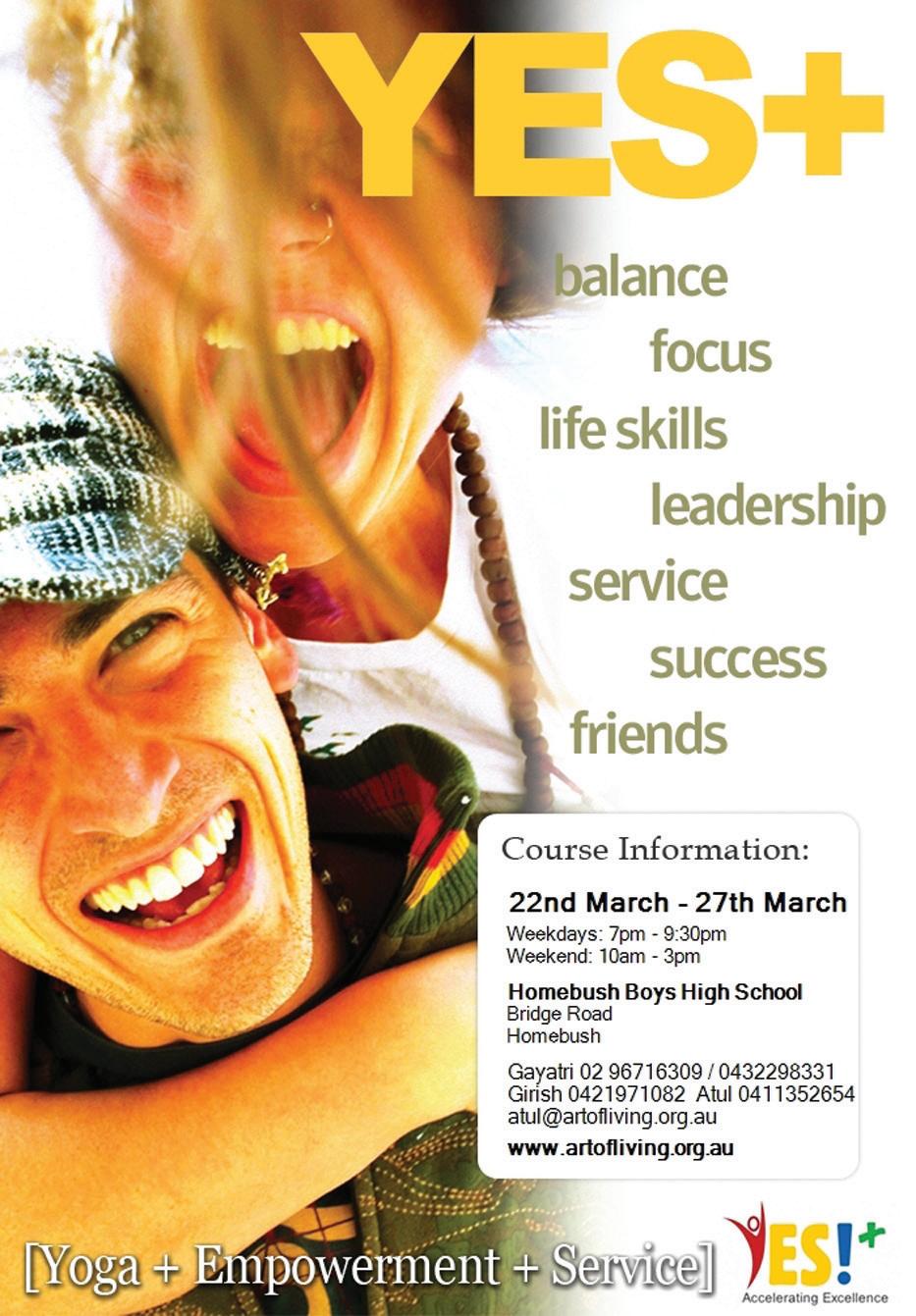

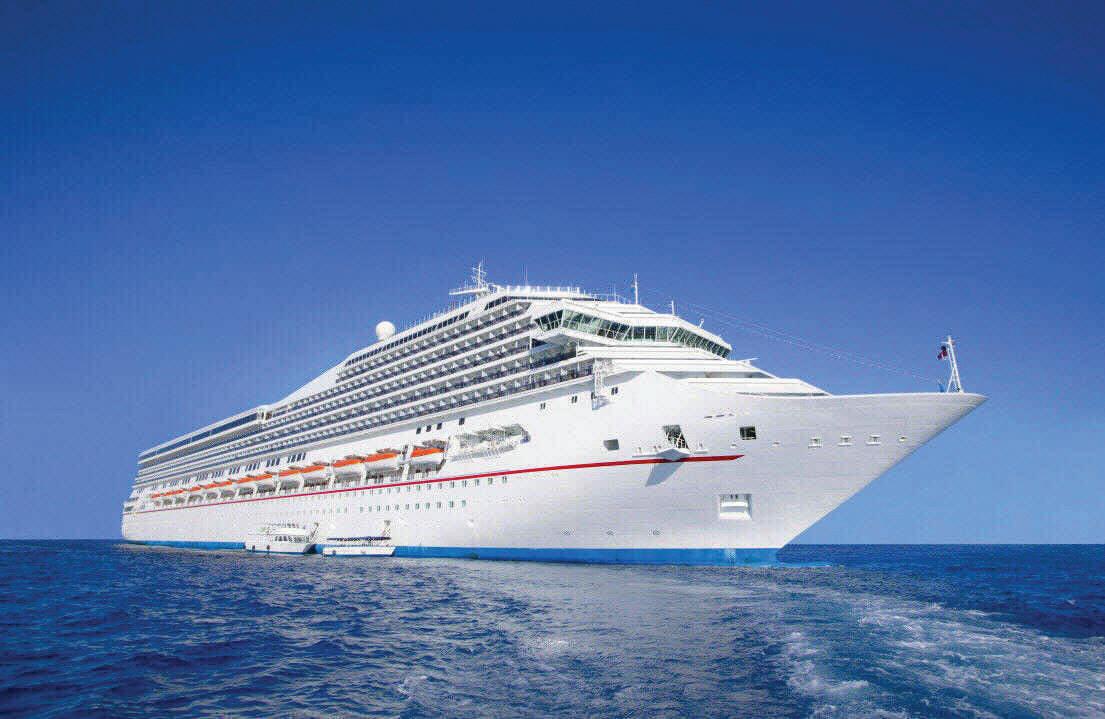
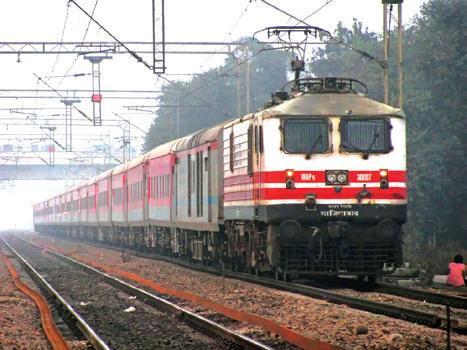
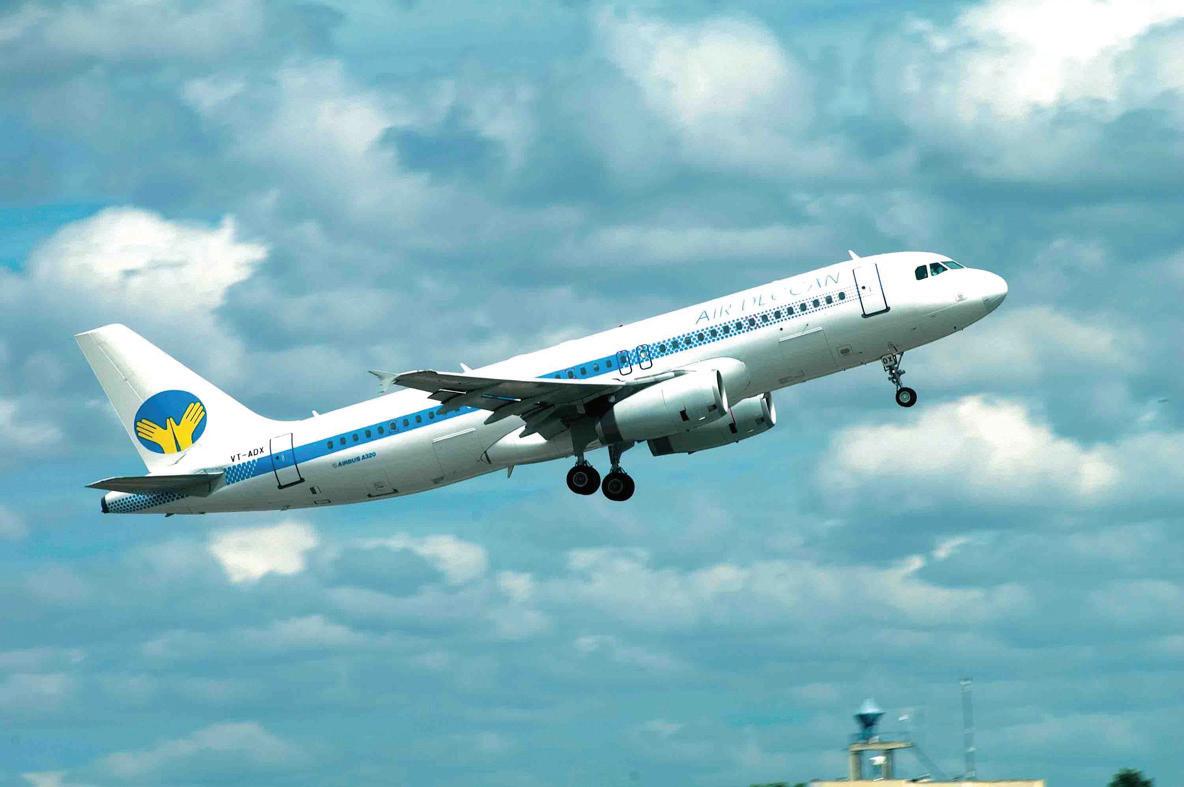
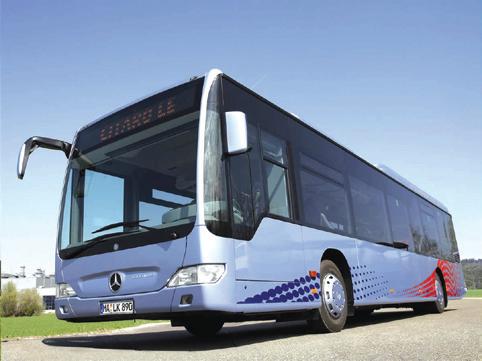
Several armed policemen were seen damaging vehicles with batons and removing number plates and press stickers. They snatched cameras and destroyed these too.
“The policemen mercilessly beat me with ‘lathis’ though I was wearing the identity card. They abused mediapersons, saying the protests are happening because of them,” said a reporter of a Telugu television channel, showing the marks of blows of batons on his back.
The Andhra Pradesh Working Journalists Union strongly condemned the police action and demanded that a criminal case be filed against Joint Commissioner of Police P.S.R. Anjaneyulu for leading the attack on journalists.
Journalists staged a sit-in on the campus, demanding action against the police officers.
Tension continued on the campus as police mobilised more forces while proTelangana lawyers and women activists reached to express solidarity with students and journalists.
Meanwhile, the committee formed by the State Human Rights Commission visited the campus to begin a probe into February 14 violence, in which over 30 students and six mediapersons were injured when police fired rubber bullets and used batons and teargas shells to disperse the agitating mobs. Trouble had started when students tried to take out a procession hailing 15 Telangana legislators who resigned to protest the terms of reference of the Srikrishna panel looking into the separate statehood demand.
State Home Minister P. Sabita Indra Reddy told reporters that action would be taken against policemen if they were found guilty of using excessive force.
Tension also prevailed at Moazzam Jahi Market, a busy commercial area, when students of City College tried to march towards the assembly building to protest the violence at Osmania University. Police used force to disperse the students.
Police also locked the gates of Nizam College in Basheerbagh area to prevent students from marching towards the assembly, where unprecedented security arrangements were made for the budget session that began on February 15.
Armed policemen to escort teams at hockey World Cup
ARMED POLICEMEN will be travelling in team buses of 12 countries participating in the World Cup hockey tournament starting in New Delhi on Feb 28. Pakistan and Australia will get the maximum security cover.
In a bid to prevent a repeat of the terror attack on Sri Lankan cricket players in Lahore last year, armed policemen will escort the players when they move to and from the Major Dhyan Chand National Stadium, where the matches will be played. The stadium, in the heart of the city, is located barely two kilometres from the Le Meridien hotel, whose 240 rooms have been booked for the teams.
“The players will travel in normal buses, not bullet-proof vehicles,” a senior officer dealing with the security of players told IANS on condition of anonymity.
Asked about the possibility of an attack like on Sri Lankan cricketers in Pakistan, the officer said: “India and Pakistan are different countries. As of now, no intelligence agency has reported any threat to the hockey World Cup. But we are taking precautionary measures.”
Besides two-three armed officers who will travel in the buses with the players, there will be a police escort ahead of the players’ bus, said the official. Although the government does not want to generate needless fears, it is equally determined to ensure that nothing goes wrong since any mishap will cast a shadow on the larger Commonwealth Games in October.
The teams from Pakistan as well as Australia -- where Indian students have come under racist attacks -- will get maximum security cover, officials told IANS.
The hockey World Cup takes place once in four years. The participating countries this time are Argentina, Canada, Germany, South Korea, Holland, Australia, New Zealand, England, India, Pakistan, South Africa and Spain.
Delhi Police spokesman Rajan Bhagat said: “We are taking the World Cup as a dry run for the Commonwealth Games. It will be a full-fledged rehearsal where multiple agencies will coordinate and work hand in hand to prevent any untoward incident.”
Riding to Green Games on a ‘Soleckshaw’!
HERE COME THE ‘SOLECKSHAWS’.
Thousands of athletes and officials taking part in the Commonwealth Games in New Delhi this year will get to travel in solar rickshaws - a zero carbon vehicle.
“We are introducing a fleet of 1,000 Soleckshaws (the name of solar rickshaws) for the Commonwealth Games players,” Rajesh Kumar, a senior scientist at the Council of Scientific and Industrial Research (CSIR), told IANS.
“These Soleckshaws are the greenest transport vehicles. They will also help the cause of the Green Games as promised by the Delhi government,” said the scientist, who has been coordinating with the state government for this project.
Over 7,000 players and delegates from over 70 countries will reach Delhi to be a part of the Commonwealth Games Oct 3-14 in the national capital.
It was developed by the Durgapur-based Central Mechanical Engineering Research Institute, one of the 30-odd laboratories of CSIR, the apex science research body in the country. The technology has been transferred to three companies - one each in Faridabad, Hyderabad and Kolkata.
“These zero carbon vehicles will ferry players inside the Games villages and help them reach sporting venues from Metro stations,” Kumar explained.
He said this effort would give special status to the country for its aim of reducing carbon intensity even during a mega sporting event and popularise the vehicle among the masses, who may adopt it quickly in several cities.
Soleckshaws are optimally designed, pedal operated, motor assisted green pedicabs which draw their power from overhead solar panels.
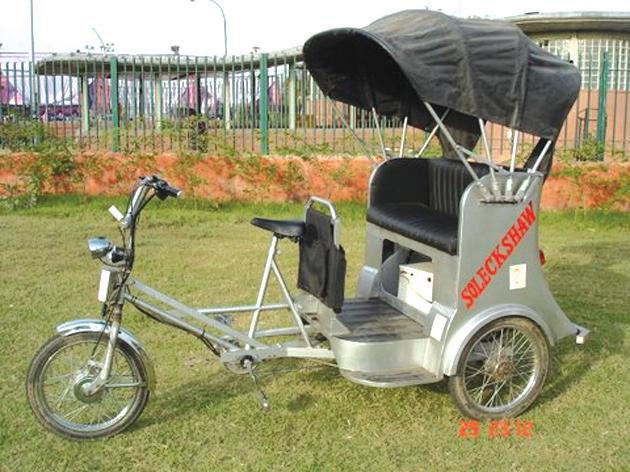
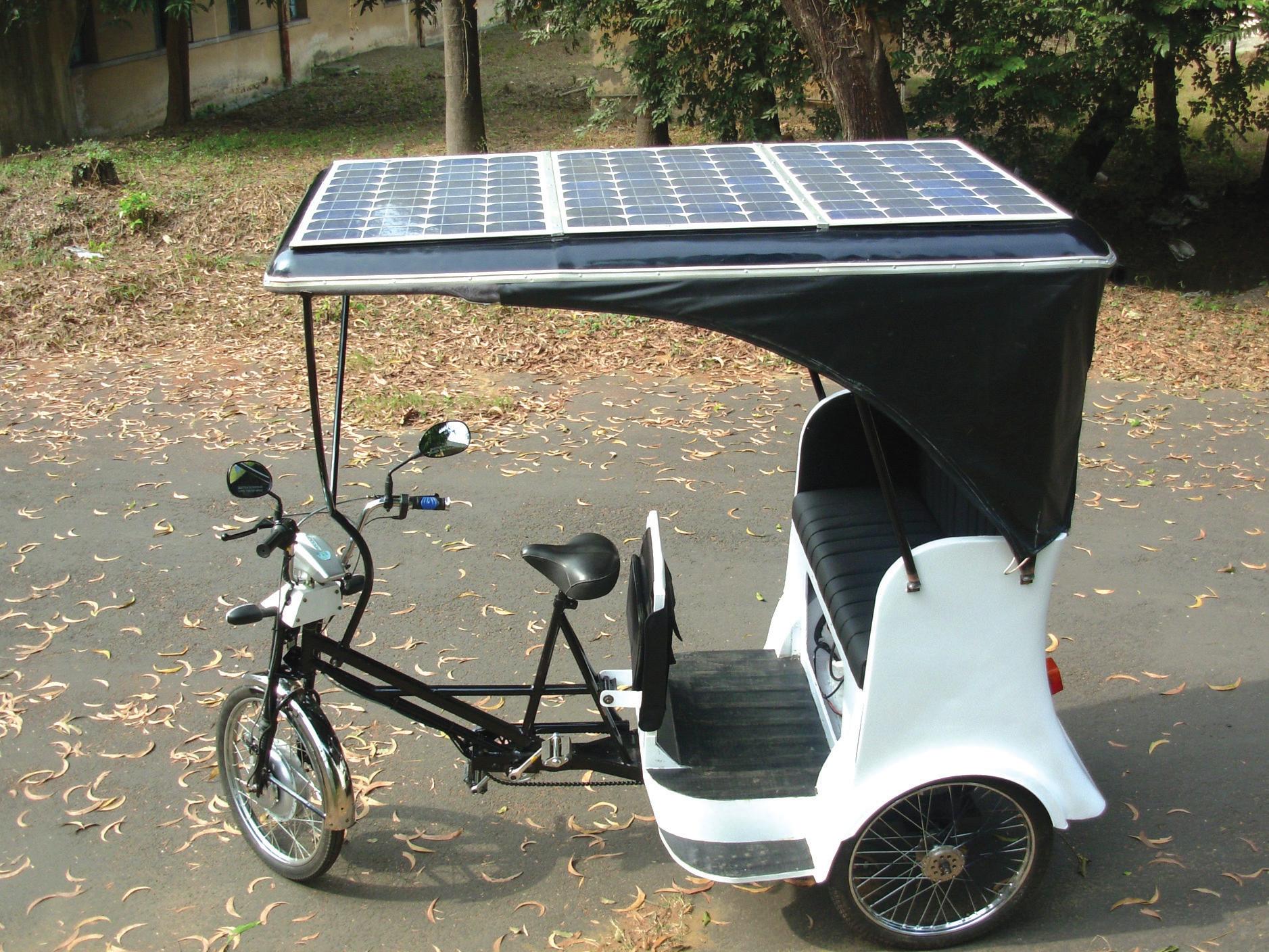
Kumar said introducing these rickshaws will herald India’s effort in providing a life of dignity to people.
“It will enhance the dignity of human labour by diminishing drudgery and exhaustion involved in pulling traditional rickshaws. This will put India in a better light among the global community. It’s a model for sustainable development,” he said.
The scientist said use during the Games would help the acceptance level of the vehicle and increase self-employment at the grassroots. The solar rickshaw would not use any fossil fuel and hence there was no question of polluting the environment.
He said the solar rickshaws would be supplied by three companies.
“We will have full support for this. It will support the Green Games concept as well as make our product a marketable one later,” Anil Sahoo, manager of the Hyderabad Battery Limited, one of the three companies, which are converting CSIR lab rickshaws to marketable ones, told IANS.
Love is not finding someone to

